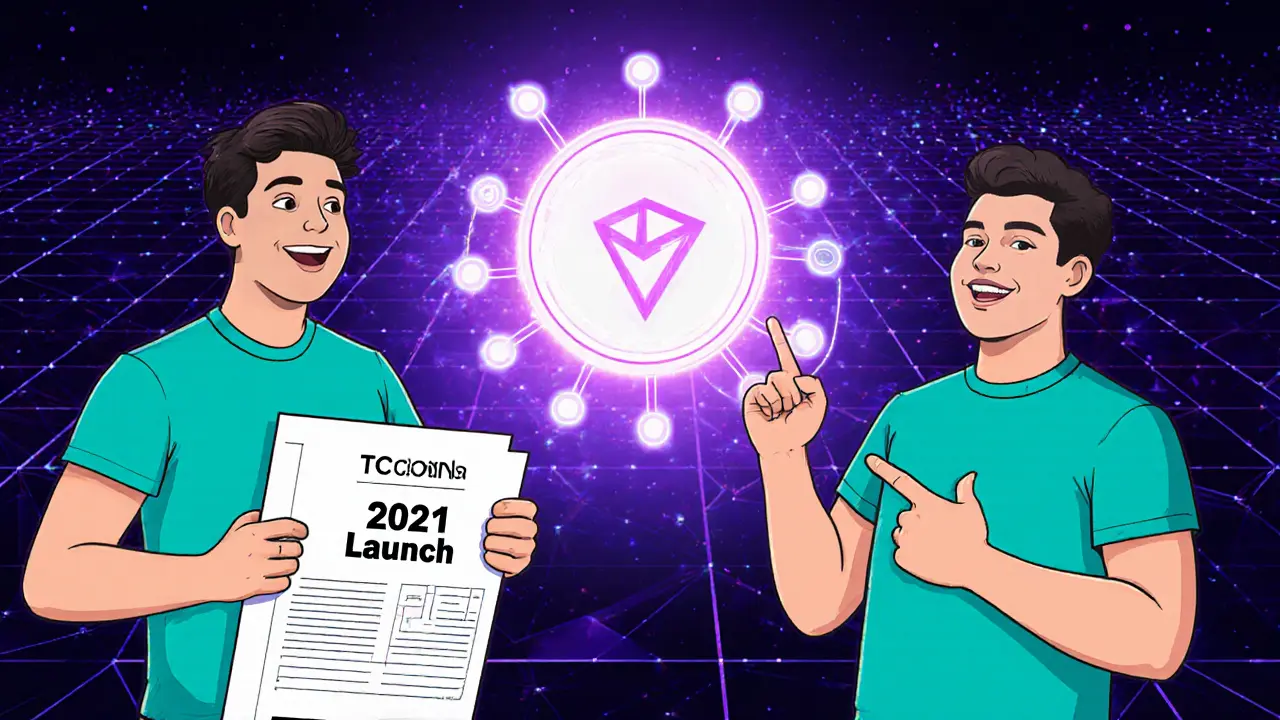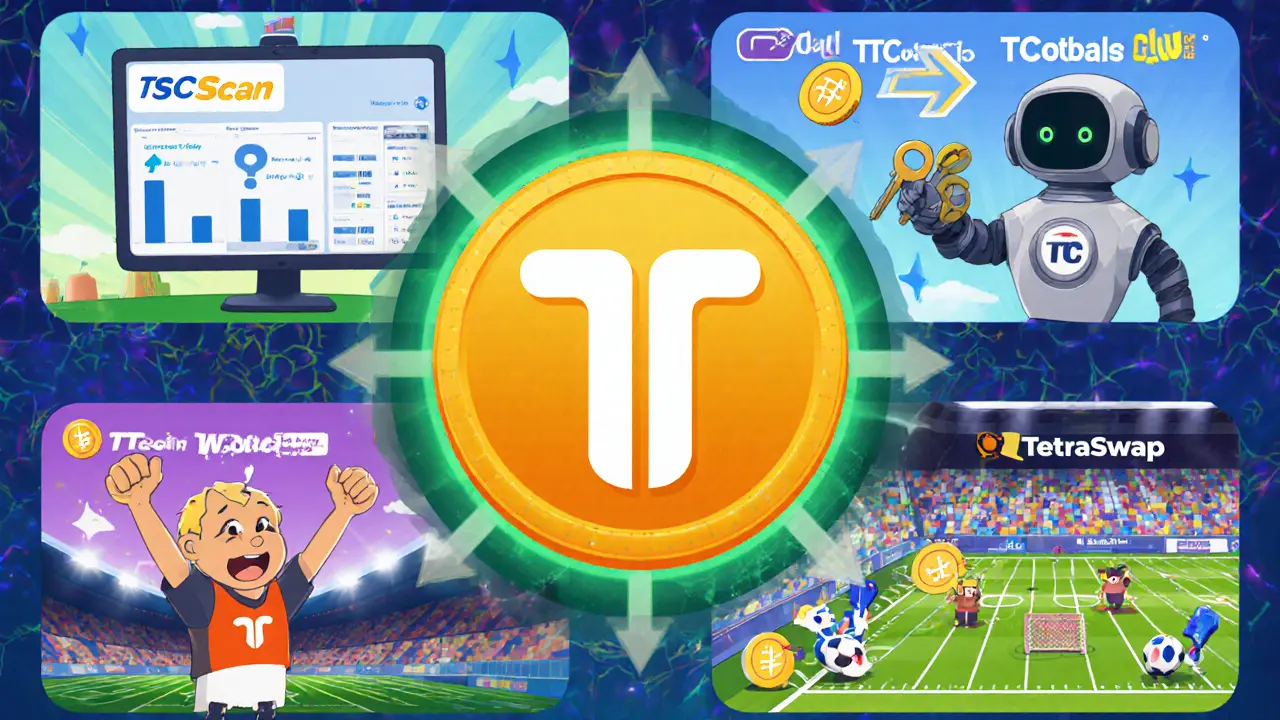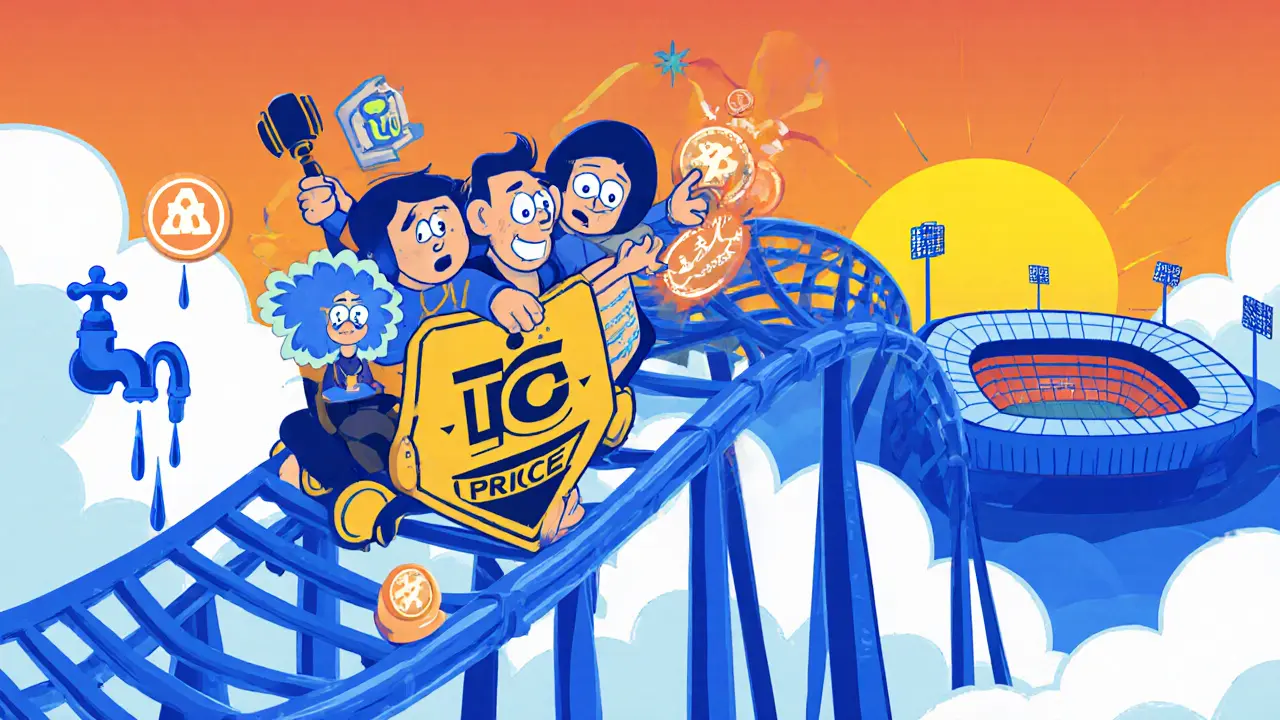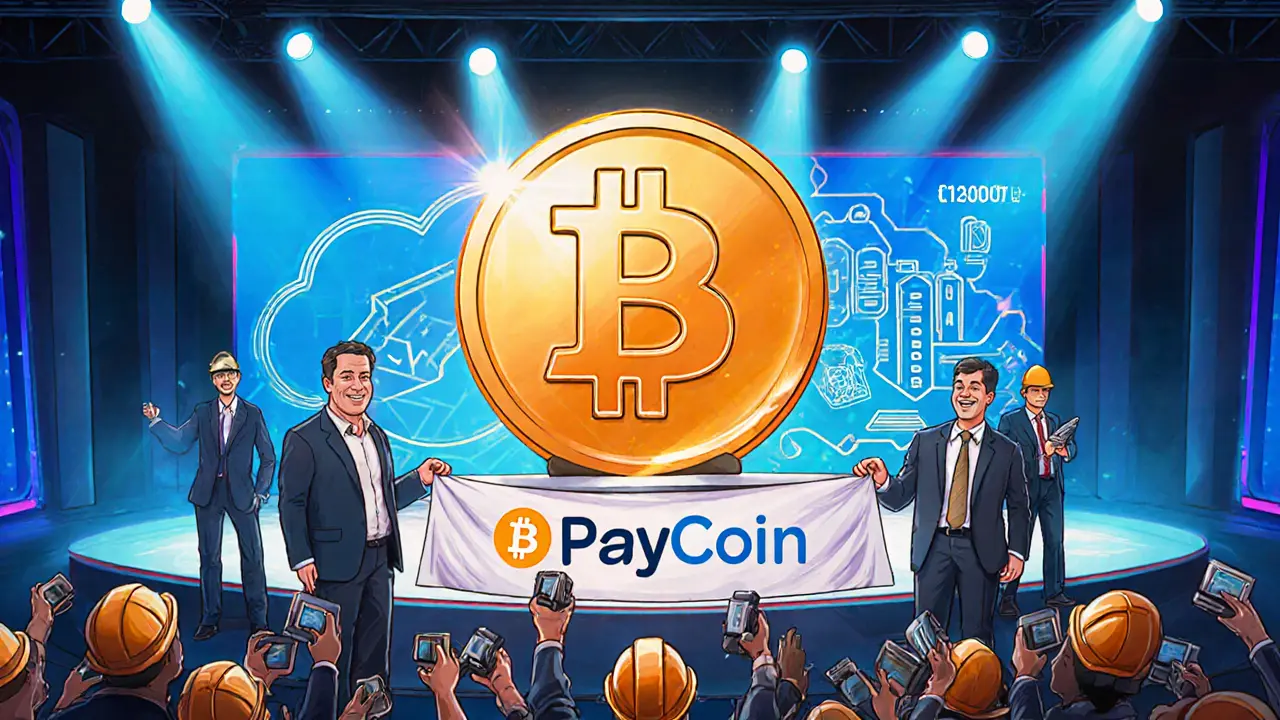
- 16 Oct 2024
- Elara Crowthorne
- 13
TTcoin (TC) Investment Calculator
Current Token Information
Current Price
$0.000194
Market Cap
$895,000
Circulating Supply
4.9 billion TC
24h Volume
$225,000
Investment Calculator
Investment Results
Initial Investment
$0.00
Final Value
$0.00
Total Return
$0.00
Return Percentage
0.00%
Risk Assessment
High RiskIf you’ve heard the buzz around TTcoin Network and wonder what it actually does, you’re not alone. This guide breaks down the token’s purpose, how it fits into the broader crypto landscape, and what you should watch before getting involved.
What is TTcoin Network?
TTcoin Network is a TRC‑20 cryptocurrency built on the TRON blockchain. Founded by brothers Tayfun Taner and Tunahan Taner, the project launched its native token, TC, on March 24, 2021. Their stated mission is to turn user investments into tangible real‑world projects, rather than pure speculation.
Tokenomics & Current Market Data
The token supply figures differ slightly across data providers. CoinMarketCap lists a max supply of 12.17billion TC, while Coinbase reports a maximum of 6billion. As of October2025 the circulating supply hovers around 4.9billion, with a total supply of about 7.63billion.
- Current price: $0.000191-$0.000197 per TC
- Market cap: roughly $820k-$970k
- 24‑hour volume: $200k-$250k
- All‑time high: $0.001954 (Nov142021)
- All‑time low: $0.00003821 (Feb202024)
The token’s volatility sits at about 3.69%, and it trades almost exclusively against USDT, indicating limited fiat access.

Core Ecosystem Components
The project isn’t just a coin; it bundles several services designed to keep users inside the TTcoin universe.
- TSCScan is a custom blockchain explorer built specifically for the TTcoin network, letting anyone verify transactions and token balances.
- TC‑Wallet Pro is a web3 wallet that connects directly to the TSC network, offering staking and integration with the platform’s internal services.
- TTcoin Football Club claims to be the first sports club owned by a cryptocurrency, serving as a real‑world showcase for the token’s utility.
- TetraSwap is an internal exchange that lets users swap TC for other TTcoin‑related assets without leaving the ecosystem.
- TTcoin Rewards is a gamified task system where users earn TC by completing surveys, watching videos, or promoting the brand.
How to Acquire and Use TC
- Set up TC‑Wallet Pro (or any TRON‑compatible wallet) and secure your seed phrase.
- Buy USDT on a major exchange that supports TRON (e.g., Binance, KuCoin).
- Transfer USDT to the TetraSwap interface.
- Swap USDT for TC at the displayed rate; the transaction will appear on TSCScan.
- Stake or lock TC in the rewards program to earn passive income, or use it to purchase merchandise from the TTcoin Football Club store.
Because TC only pairs with USDT on the limited exchange, moving the token off‑platform often requires using the same bridge back to the TRON network.
Risks and Common Criticisms
While the ecosystem sounds comprehensive, several red flags merit attention:
- Liquidity constraints: Only one exchange lists TC, meaning large trades can cause noticeable price slippage.
- Holder distribution: Around 60,000 on‑chain addresses own the majority of tokens, suggesting modest community depth despite claims of 20million users.
- Price performance: The token has lost nearly 90% of its value since the 2021 peak, and short‑term forecasts from platforms like CoinCodex predict further declines.
- Regulatory exposure: As a TRC‑20 token focused on real‑world projects, TTcoin may attract scrutiny if any of its claimed ventures turn out to be unregistered securities.
Potential investors should treat TC as a high‑risk asset and consider diversification.

Future Outlook & Price Predictions
Technical analysis shows TC trading above both its 50‑day ($0.00017) and 200‑day ($0.000162) moving averages, with a 14‑day RSI of 65, indicating neutral momentum. However, sentiment indicators are mixed: CoinCodex’s short‑term outlook is bearish, expecting a dip to $0.00014 by year‑end, while DigitalCoinPrice projects a rebound to $0.00182 by 2032.
Real‑world execution will be the decisive factor. If the TTcoin Football Club and associated businesses generate measurable revenue, the token could gain credibility and attract institutional interest, potentially improving liquidity. Conversely, delays or unmet promises would likely keep the price marginally above the recent lows.
Key Takeaways
- TTcoin Network is a TRC‑20 token on TRON, launched in 2021 by the Taner brothers.
- Current market cap is under $1million with a circulating supply of ~4.9billion TC.
- The ecosystem includes TSCScan, TC‑Wallet Pro, TTcoin FC, TetraSwap, and a rewards program.
- Liquidity is limited to a single exchange and USDT pairing, raising execution risk.
- Short‑term price forecasts are bearish, but long‑term potential hinges on real‑world project success.
Frequently Asked Questions
What blockchain does TTcoin run on?
TTcoin is a TRC‑20 token that operates on the TRON network.
How can I buy TC?
You need a TRON‑compatible wallet, purchase USDT on a major exchange, transfer it to the TetraSwap interface, and swap it for TC.
What is the total supply of TC?
Sources differ: CoinMarketCap cites 12.17billion max supply, while Coinbase lists 6billion. The circulating supply is about 4.9billion as of October2025.
Is TTcoin a good long‑term investment?
It carries high risk. Price has fallen ~90% from its 2021 peak, liquidity is thin, and success depends on the real‑world projects delivering revenue.
What utilities does TC provide beyond speculation?
TC can be staked in the Rewards program, used to purchase TTcoin FC merchandise, and exchanged on TetraSwap for other ecosystem tokens.



13 Comments
Wow, reading about TTcoin feels like stepping onto a roller‑coaster of possibilities! The way they’ve built an ecosystem around a single token is downright cinematic, and I can already picture the doors opening for everyday investors. If the football club really takes off, we might see a surge that rockets this little gem into the spotlight. Buckle up, folks-this could be the thrill ride we’ve been waiting for.
Sure, the hype sounds shiny, but let’s not forget that the whole setup hinges on a single exchange and USDT pairing-pretty thin ice for a “thrill ride.” The liquidity constraints alone make it a risky gamble, and the token’s 90% plunge since 2021 isn’t exactly a cheering crowd. I’d keep my feet on the ground before diving in.
For clarity, TTcoin operates as a TRC‑20 token on the TRON network, and its smart‑contract code is publicly auditable on TSCScan. The current circulating supply of approximately 4.9 billion TC translates to a market cap under $1 million, which places it among low‑market‑cap assets. The token’s 24‑hour volume consistently hovers between $200 k and $250 k, indicating limited trading activity. Investors should also note the discrepancy in reported max supply figures between major aggregators.
Ah, but consider, dear reader, the very nature of scarcity, the illusion of abundance, the paradox of a token that promises real‑world utility yet remains tethered to a single liquidity pool, -such is the modern alchemy of finance, -where promises are minted, and value evaporates, -and we, the participants, are left to question the substance of “utility” itself.
This whole “ecosystem” feels like a glorified pyramid; they shove you into staking programs and promise “passive income” while the token’s price keeps sinking. The fact that 60 000 addresses hold most of the supply suggests a small inner circle pulling the strings. It’s a classic case of hype over substance.
Oh, bravo, Lara-nothing says “deep insight” like parroting the same tired talking‑point that every skeptics’ forum recycles. If you wanted a fresh perspective, you could've at least acknowledged the marginal upside the football club might bring, but alas, your sarcasm is as stale as the token’s price.
I totally get why people are excited, but honestly, I think it’s kinda risky. The project sounds cool, but the price drop is definetly scary. If they can prove the football club actually makes money, maybe it’ll feel safer to jump in.
Thank you for sharing your concerns. From a risk‑management perspective, investors should first verify the contract’s audit reports on TSCScan, then assess the liquidity depth on the sole exchange listing TC. It is prudent to allocate only a small fraction of one’s portfolio to such high‑volatility assets and to set stop‑loss orders to mitigate downside exposure. Additionally, monitoring the operational milestones of the TTcoin Football Club can provide insight into whether the promised real‑world revenue materializes.
Indeed, the professional approach you outlined, Mark, underscores the necessity of disciplined investing-especially in nascent ecosystems-; however, let us not overlook the community’s role in fostering organic growth, which often manifests through grassroots promotion and user‑generated content, thereby potentially enhancing liquidity over time.
Be careful, everyone. These crypto projects often hide something, and the fact that they only list on one exchange could mean they’re being controlled by a few people. Stay safe and don’t put all your money in.
Looks like another pump-and-dump scheme.
The TTcoin protocol leverages TRC‑20 token standards, thereby inheriting the high‑throughput characteristics of the underlying TRON network.
The token’s consensus model is delegated proof‑of‑stake, which theoretically reduces block finality latency.
Its economic model incorporates a deflationary burn mechanism predicated on transaction fees, although the burn rate is not publicly disclosed.
Liquidity provisioning is confined to a single order‑book exchange, resulting in a non‑linear price impact curve when executing market orders above the 0.5 % threshold.
Market depth analysis reveals a thin order book, with a bid‑ask spread averaging 1.2 %, indicating heightened slippage risk.
The ecosystem’s ancillary services-TSCScan, TC‑Wallet Pro, and TetraSwap-are integrated via smart‑contract calls, yet they lack the interoperability standards observed in cross‑chain bridges.
Staking contracts offer an annual percentage yield (APY) in the range of 5–12 %, but this figure is derived from a simplistic model that does not account for token inflation.
The TTcoin Football Club tokenization scheme attempts to bind on‑chain assets to off‑chain revenue streams, a concept that remains under‑regulated in most jurisdictions.
Regulatory compliance is therefore a grey area; securities law analysts have flagged potential violations under the Howey test.
Historical price trajectory shows a 90 % depreciation from its all‑time high, an exponential decay that mirrors a classic negative exponential decay curve in statistical physics.
Volatility metrics, such as a 3.69 % 24‑hour standard deviation, place it in the upper quartile of TRC‑20 tokens.
Correlation analysis with Bitcoin and major altcoins yields a negligible beta, suggesting that TTcoin moves largely independently of broader market sentiment.
Nonetheless, the token’s low market cap (< $1 M) makes it susceptible to manipulation by whales, as evidenced by periodic order‑book sweeps.
From a portfolio construction standpoint, allocating no more than 2–3 % of total exposure to such a high‑risk asset aligns with modern mean‑variance optimization frameworks.
In conclusion, while the technical scaffolding is intriguing, the confluence of limited liquidity, regulatory ambiguity, and speculative utility warrants a cautious, data‑driven approach before committing capital.
Sal’s exposition underscores the intricate technicalities of TTcoin, yet the philosophical takeaway remains clear: without tangible, verifiable utility, any sophisticated architecture may merely serve as a mirage. Investors ought to weigh the epistemic value of the project’s promises against the ontological certainty of its current market reality. A measured approach, grounded in empirical evidence rather than speculative allure, is the prudent path forward.